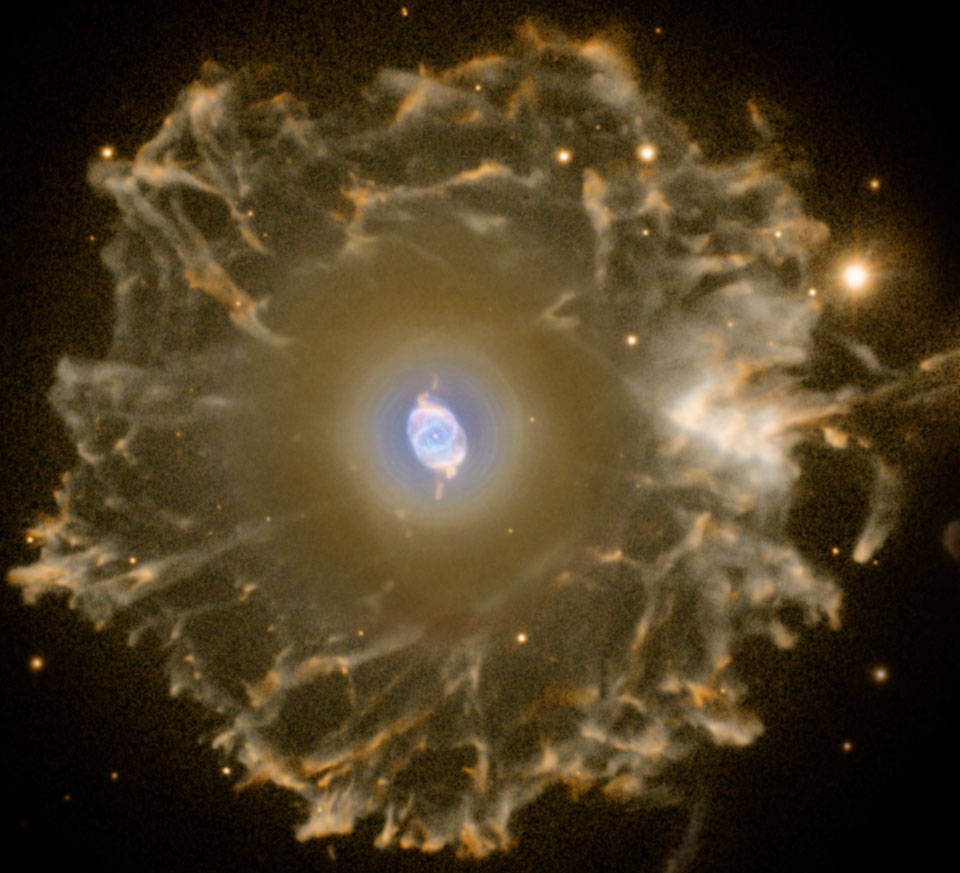2020 June 7
Halo of the Cat’s Eye
Image Credit & Copyright: R. Corradi (Isaac Newton Group), Nordic Optical Telescope
Explanation: The Cat’s Eye Nebula (NGC 6543) is one of the best known planetary nebulae in the sky. Its haunting symmetries are seen in the very central region of this stunning false-color picture, processed to reveal the enormous but extremely faint halo of gaseous material, over three light-years across, which surrounds the brighter, familiar planetary nebula. Made with data from the Nordic Optical Telescope in the Canary Islands, the composite picture shows extended emission from the nebula. Planetary nebulae have long been appreciated as a final phase in the life of a Sun-like star. Only much more recently however, have some planetaries been found to have halos like this one, likely formed of material shrugged off during earlier active episodes in the star’s evolution. While the planetary nebula phase is thought to last for around 10,000 years, astronomers estimate the age of the outer filamentary portions of this halo to be 50,000 to 90,000 years.
Tomorrow’s picture: Venusian sun ring
猫眼星云的外晕
影像提供与版权: R. Corradi (Isaac Newton Group), Nordic Optical Telescope
说明: 猫眼星云(NGC 6543)是天空最著名的行星状星云之一。在这张令人惊艳的假色影像里,形状对称且引人注目的星云位在中央,此外,影像经过特殊处理,以显示明亮行星状星云的外围,有个极昏暗而且跨幅超过3 光年的外晕。这张使用加那利群岛.北欧光学望远镜数据组合出来的影像,呈现星云发出相当宽波段范围的辐射。虽然长久以来,行星状星云咸认是是类太阳恒星生命中的最后一章,不过发现部份行星状星云具有外晕,则是晚近的事。而这种外晕,很可能是恒星在演化较初期所抛出的物质。虽然行星状星云阶段持续的时间,通常大约只有10,000年,不过上面这个丝缕状的外晕结构,年龄介于5万到9万年之间。
明日的图片: Venusian sun ring







